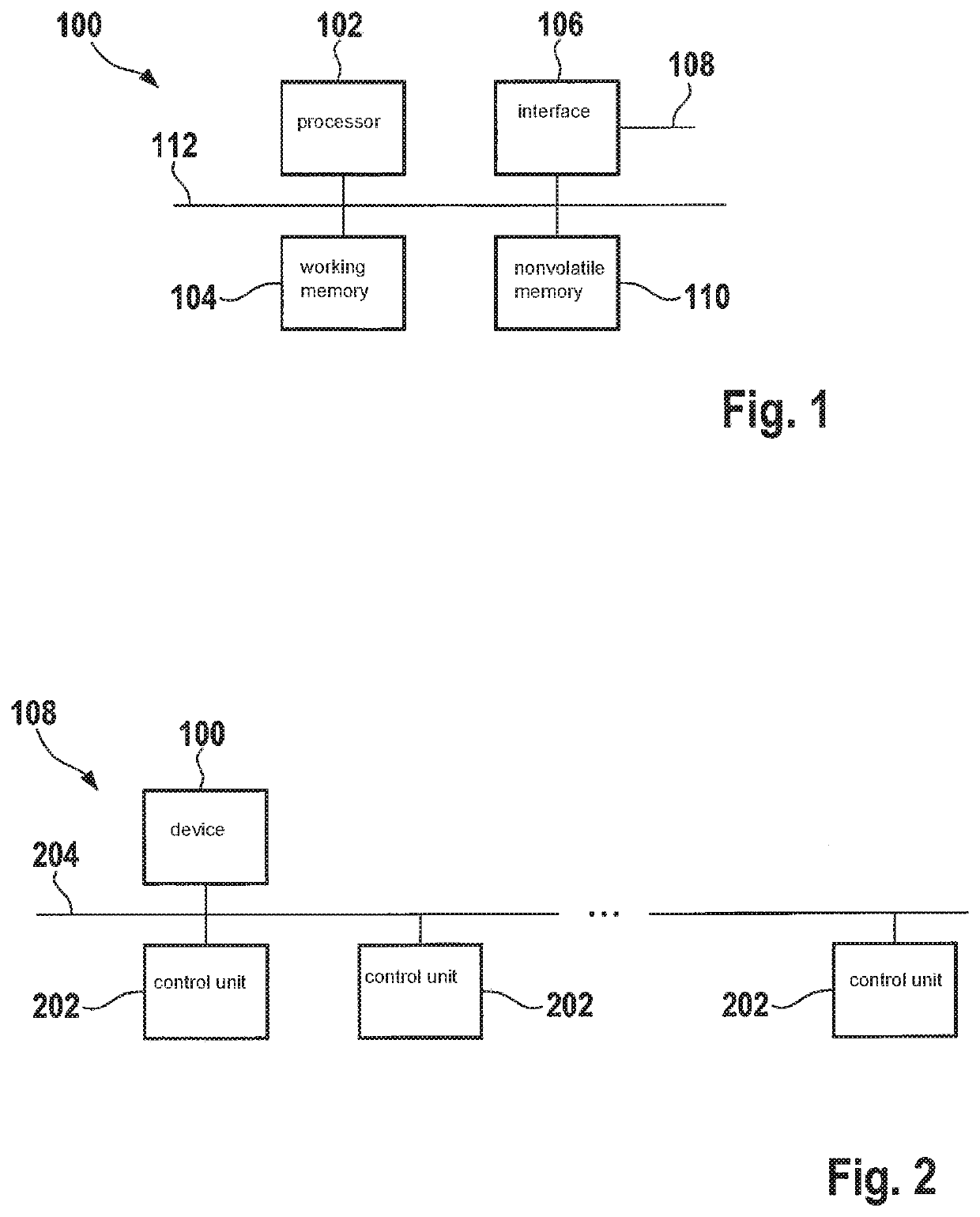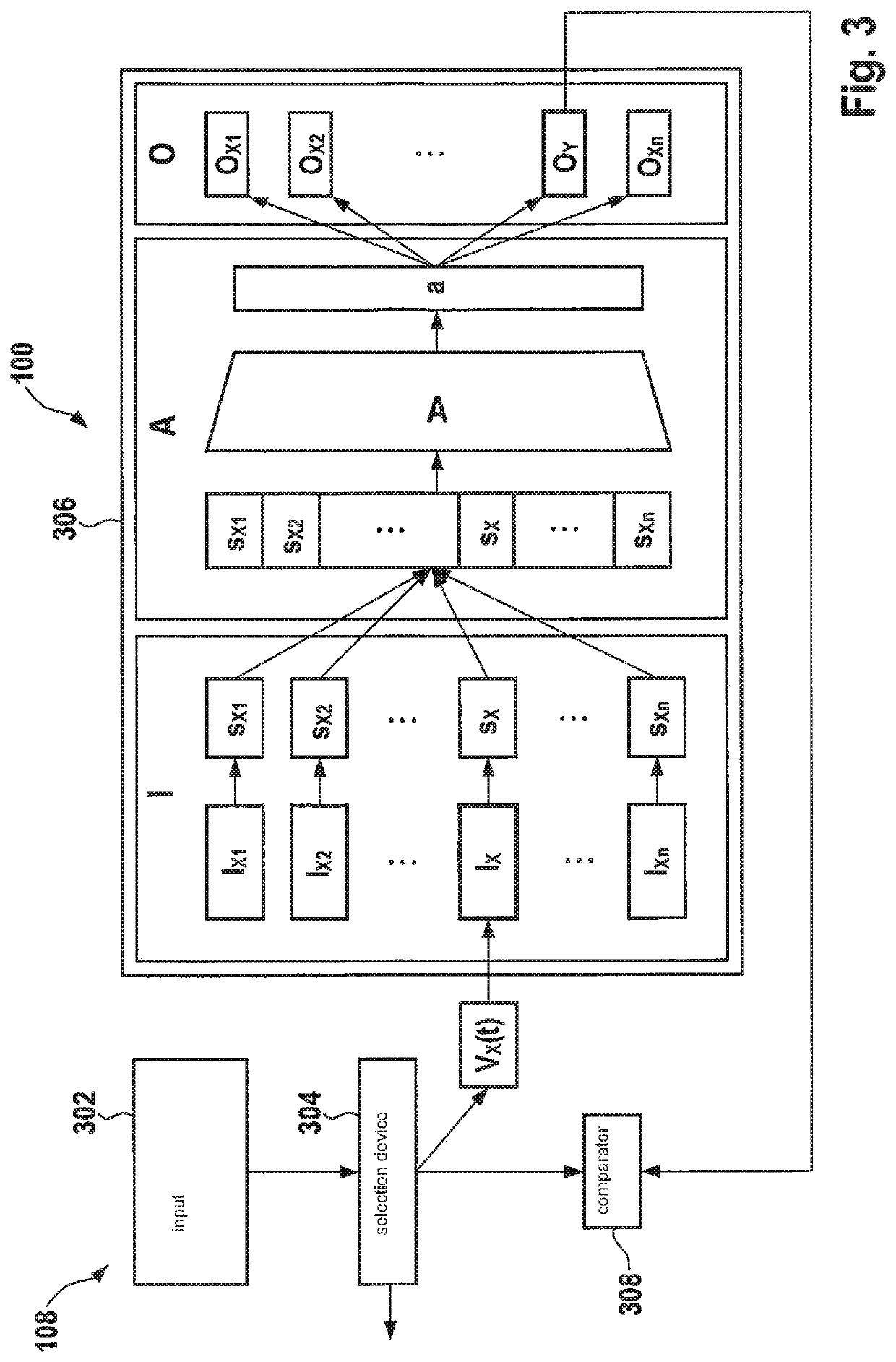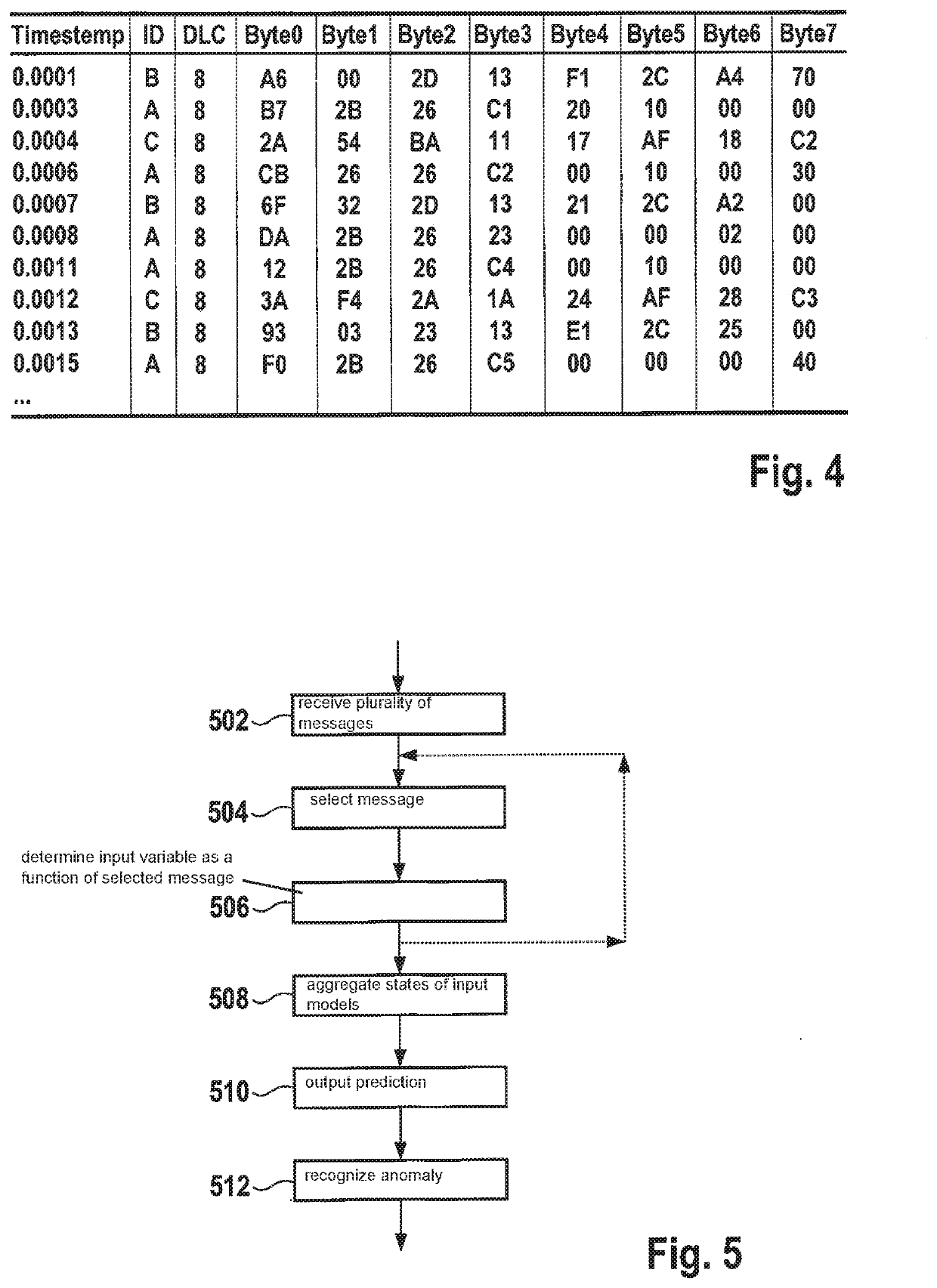Device and method for classifying data in particular for a controller area network or an automotive ethernet network
a controller area network and data classifier technology, applied in data switching networks, instruments, biological models, etc., can solve problems such as major challenges, components of the can or of the vehicle are damaged, and the subsystems of the can or the vehicle are damaged or completely destroyed
- Summary
- Abstract
- Description
- Claims
- Application Information
AI Technical Summary
Benefits of technology
Problems solved by technology
Method used
Image
Examples
Embodiment Construction
[0044]FIG. 1 schematically illustrates a device 100 for classifying data.
[0045]Device 100 is an embedded device in the example. Device 100 includes a processor 102, a working memory 104, an interface 106 for a communications network 108, and a nonvolatile memory 110. These are designed to communicate via a bus 112 or some other data line.
[0046]FIG. 2 schematically illustrates portions of communications network 108, in which device 100 and multiple control units 202 are situated on a data line 204. Data line 204 is a CAN bus in the example, but may additionally include an automotive Ethernet connection, or alternatively may be an automotive Ethernet connection.
[0047]FIG. 3 depicts a schematic illustration of a flow chart and a neural network architecture. This is based on a CAN, but is correspondingly also applicable for an automotive Ethernet. Device 100 is designed to classify data in communications network 108, in particular for a CAN or an automotive Ethernet network.
[0048]Device...
PUM
 Login to View More
Login to View More Abstract
Description
Claims
Application Information
 Login to View More
Login to View More - R&D
- Intellectual Property
- Life Sciences
- Materials
- Tech Scout
- Unparalleled Data Quality
- Higher Quality Content
- 60% Fewer Hallucinations
Browse by: Latest US Patents, China's latest patents, Technical Efficacy Thesaurus, Application Domain, Technology Topic, Popular Technical Reports.
© 2025 PatSnap. All rights reserved.Legal|Privacy policy|Modern Slavery Act Transparency Statement|Sitemap|About US| Contact US: help@patsnap.com



